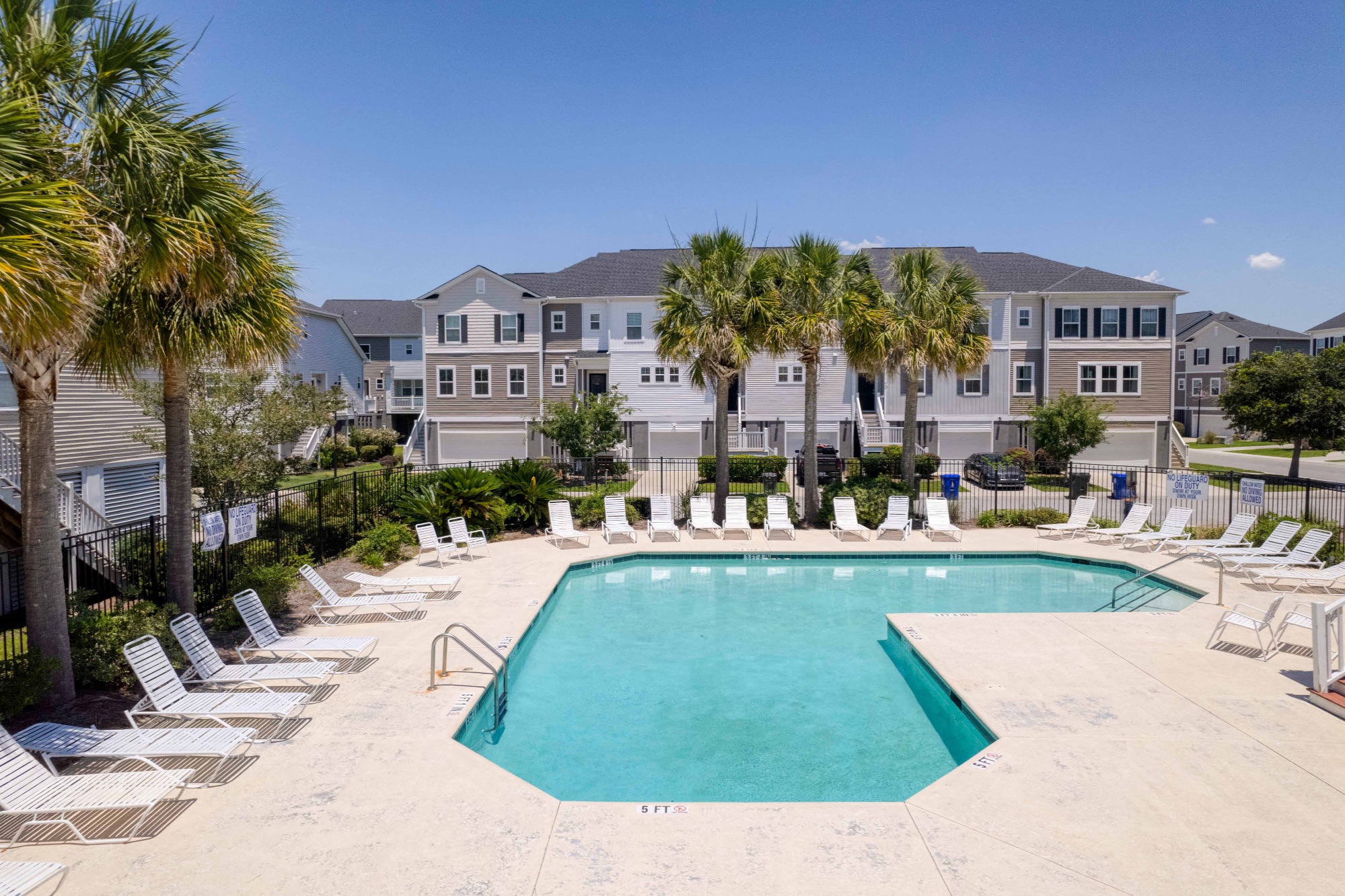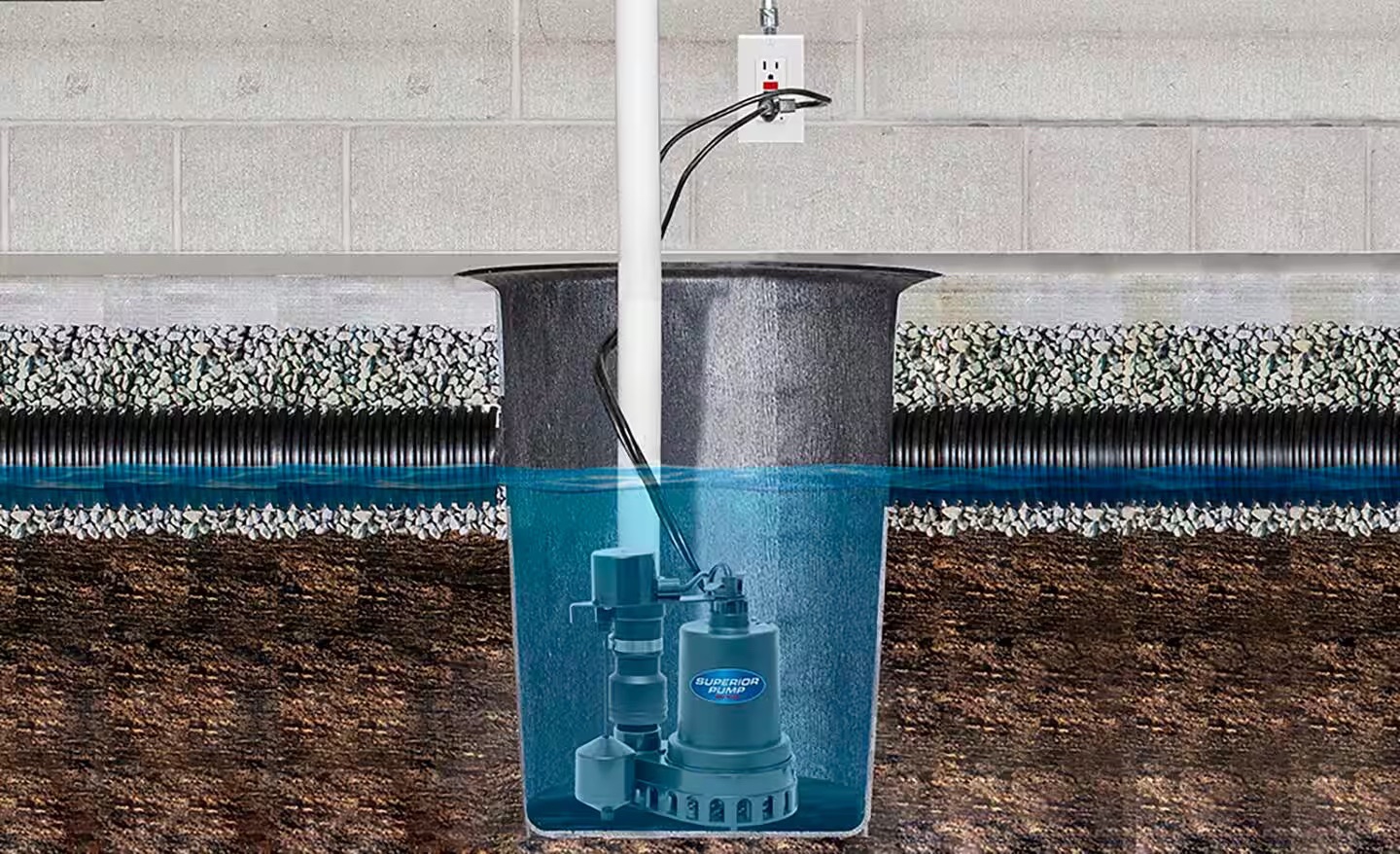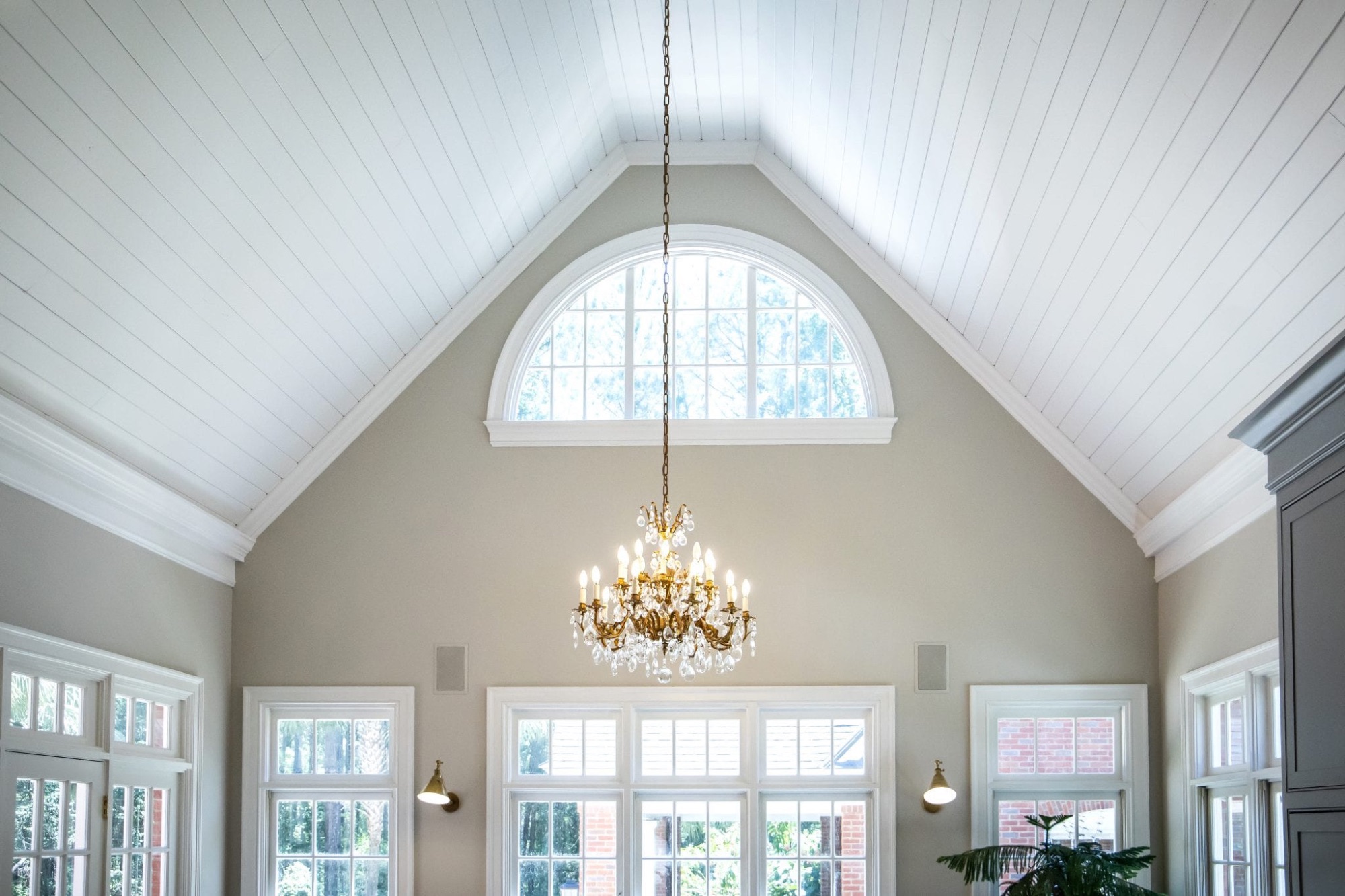A Guide to Different Types of Sump Pumps for Residential Homes: What They Are and Where the Water Goes

A sump pump is an essential component for many homeowners, especially those living in areas prone to heavy rainfall or with high water tables. Its primary job is to keep basements and crawl spaces dry by removing water that accumulates in a sump basin, typically located in the lowest part of the house. Without a sump pump, excess water can lead to flooding, foundation damage, mold growth, and other costly problems.
In this blog, we’ll explore the different types of sump pumps available for residential use, how they work, and the most effective ways to direct the water away from your home.
Types of Sump Pumps
Sump pumps come in various designs, each suited for specific needs and setups. The two most common categories are submersible and pedestal sump pumps, but other variations also exist, such as battery backup and water-poweredsump pumps. Let’s break them down:
1. Submersible Sump Pump
A submersible sump pump is designed to operate underwater within the sump basin. The motor and pump are sealed within a waterproof casing, making it quieter and more durable. These pumps sit directly in the sump pit and are typically the most efficient at removing water, especially in homes where there is significant water accumulation.
Pros:
- Quiet operation due to being underwater
- Efficient water removal
- Fully hidden in the sump basin
Cons:
- Typically more expensive than other models
- May be more difficult to service or replace due to being submerged
2. Pedestal Sump Pump
A pedestal sump pump has a motor that sits above the sump basin, with only the hose and pump mechanism submerged in the water. This design makes it easier to access and service but can be noisier due to the motor being exposed. Pedestal pumps are often used in smaller sump basins or where frequent maintenance is expected.
Pros:
- More affordable than submersible pumps
- Easy to access and repair
Cons:
- Noisier operation
- Takes up more space in the basement or crawl space
3. Battery Backup Sump Pump
A battery backup sump pump is typically used in combination with either a submersible or pedestal pump. It kicks in when the primary pump loses power (common during storms) or if the primary pump fails. This secondary system provides peace of mind by ensuring your home remains protected even during power outages.
Pros:
- Offers protection during power outages
- Can handle water if the main pump fails
Cons:
- Additional installation and maintenance costs
- Requires battery replacement periodically
4. Water-Powered Sump Pump
A water-powered sump pump operates using your home’s municipal water supply instead of electricity. These pumps are a good backup option since they rely on water pressure to create suction, which pulls excess water out of the sump basin.
Pros:
- No battery or electricity required
- Ideal as a backup system
Cons:
- May not work well with low water pressure
- Can increase water bills due to high water consumption
Where Should the Water Be Pumped?
Once the sump pump removes water from the sump basin, it’s crucial to discharge it in a way that keeps it away from your home’s foundation to prevent future flooding or water damage. Here are the most common and effective discharge methods:
1. Drainage to the Yard
Most sump pumps discharge water to a location in your yard, typically at least 10-20 feet away from the house. The water is then absorbed into the ground or guided to a safe drainage area. It’s essential to ensure that the water is directed to a sloped area where it will naturally flow away from the home.
Key Considerations:
- Ensure the water doesn’t pool near the foundation or seep back into the home.
- The discharge area should be clear of landscaping that might impede water flow.
2. Storm Sewer System
In some municipalities, homeowners are allowed to connect their sump pumps directly to the storm sewer system. This system is designed to carry stormwater away from residential areas and direct it to natural bodies of water like rivers or retention ponds.
Key Considerations:
- Always check local regulations to ensure this is allowed.
- Avoid connecting sump pumps to sanitary sewers, as this can lead to contamination and overload the sewer system during heavy rains.
3. Dry Well
A dry well is an underground structure that collects and stores the water discharged by the sump pump, allowing it to slowly percolate into the surrounding soil. This is a great option for homes with limited yard space or those in areas where drainage to the yard is insufficient.
Key Considerations:
- The dry well should be large enough to handle the volume of water being pumped.
- Make sure the well is located far enough from your home’s foundation to prevent water from seeping back into the basement.
4. French Drain System
A French drain is another option for directing sump pump water away from your home. It involves a gravel-filled trench with a perforated pipe that allows water to drain more efficiently. This system is often used in conjunction with the sump pump to redirect water to a lower area of the yard or a stormwater drainage area.
Key Considerations:
- Proper installation is key to ensuring the French drain effectively carries water away.
- Regular maintenance is required to prevent the system from clogging.
Sump Pump Maintenance Tips
No matter the type of sump pump you install, proper maintenance is critical to ensuring it functions effectively when you need it most. Here are a few key tips for maintaining your sump pump:
- Test regularly: Pour a bucket of water into the sump basin to ensure the pump activates and drains the water properly.
- Check the float switch: Ensure the float switch, which triggers the pump, is free from obstructions and moves smoothly.
- Inspect discharge lines: Regularly check discharge pipes for clogs, blockages, or leaks, especially after heavy rain or storms.
- Replace the battery: For battery backup systems, replace the battery every 2-3 years to ensure reliable operation during power outages.
Conclusion
Sump pumps are a vital defense against water damage in homes, particularly those in flood-prone areas or with basements. Understanding the different types of sump pumps—submersible, pedestal, battery backup, and water-powered—can help you choose the right one for your home. Equally important is ensuring the water is properly discharged to a safe location, whether that’s a yard, storm sewer, dry well, or French drain system.
By choosing the right system and maintaining it regularly, you can protect your home from potential water damage and keep your basement dry and safe year-round.
Categories
- All Blogs (81)
- 1031 exchange (2)
- 2024 market (1)
- 55 and over community (1)
- activities (2)
- african american (2)
- ai (1)
- ai design (1)
- angel oak tree (2)
- antebellum (2)
- assisted living (1)
- authors (1)
- blue bottle tree (1)
- boating (2)
- books about the lowcountry (1)
- boone hall (2)
- bulls island (2)
- buyer (8)
- buying (21)
- buying a home (20)
- buying in mount pleasant (6)
- buying in the lowcountry (6)
- buying on the water (4)
- cad (1)
- canoeing (1)
- charleston (30)
- charleston county (15)
- charleston tax (2)
- chart a boat (1)
- childhood home (1)
- climate change (1)
- coastal design (1)
- coastal erosion (1)
- coastal kitchen (1)
- coffee (1)
- coffee shops in charleston (1)
- condos (1)
- culinary (1)
- cypress gardens (1)
- design (2)
- dewees island (1)
- dock (2)
- docklife (1)
- downtown charleston (1)
- drayton hall (2)
- elderly couple (1)
- estate (1)
- farmers markets (1)
- flowers (1)
- folklore (1)
- folly beach (3)
- folly river (1)
- food (1)
- forestland (1)
- Fourth of July in Charleston (1)
- garden (1)
- gardening (1)
- georgian (1)
- greater charleston (5)
- greek revival (1)
- green thumb (1)
- greenhouse (1)
- gullah (1)
- haint blue (1)
- heirs' property (1)
- high water (1)
- historic architecture (1)
- historical homes (2)
- history (1)
- hoa fees (1)
- home buying (8)
- home repair (3)
- home styles (1)
- homeowner (6)
- homeownership (6)
- homes for sale in charleston (1)
- homes for sale in james island (1)
- homes for sale in mount pleasant (1)
- homes for sale in west ashley (1)
- homestead (1)
- homestead exemption (1)
- hospitality (1)
- hostess (1)
- hosting (1)
- houses (1)
- hurricane (1)
- insulation (1)
- interior decor (3)
- interior design (2)
- interiordesign (1)
- intracoastal (3)
- investing (1)
- investment (2)
- investment property (1)
- isle of palms (3)
- italiante (1)
- james island county park (1)
- john's island (1)
- kayaking (1)
- kitchen design (2)
- kitchen layout (1)
- land in common (1)
- lighthouse (1)
- lighthouses (1)
- lowcountry (10)
- luxury (1)
- luxury real estate (1)
- magnolia plantation (2)
- marketing (2)
- marketingyourhome (1)
- marsh (1)
- mold (1)
- mold in homes (1)
- mold in the lowcountry (1)
- mold remediation (1)
- mount pleasant (5)
- moving (3)
- moving to charleston (5)
- movingoutofstate (1)
- movingtocharleston (2)
- nar (1)
- nar lawsuit (1)
- nautical (1)
- oak trees (1)
- paddleboarding (1)
- palm trees (1)
- palmetto (1)
- palmetto trees (1)
- plantation (1)
- plantations (2)
- property (1)
- property preservation (1)
- raised homes (1)
- real estate (7)
- realestate (2)
- realestatemarketing (1)
- realty (6)
- realty101 (1)
- regime fees (1)
- relocation (1)
- relocationcosts (1)
- remediation (1)
- rental (1)
- rental properties (1)
- restaurant week (1)
- restaurants (1)
- retirement (1)
- sailing (1)
- seller (3)
- selling (10)
- selling a home (3)
- selling in charleston (4)
- selling in mount pleasant (2)
- selling on the water (1)
- selling your home (5)
- sellingyourhome (1)
- senior citizen (1)
- senior citizens (1)
- senior living (1)
- shark tooth (1)
- shem creek (2)
- south (1)
- south carolina (4)
- south of broad (1)
- southern architecture (1)
- southern folklore (1)
- southern hospitality (1)
- southern lady (1)
- southern living (2)
- spanish moss (1)
- spray foam (1)
- spray foam insulation (1)
- sullivans island (2)
- sweetgrass (1)
- sweetgrass baskets (1)
- taxes (1)
- tidal (1)
- title (2)
- title insurance (1)
- tour (1)
- tour times (1)
- townhomes (1)
- useanagent (1)
- victorian (1)
- wando river (1)
- water views (1)
- waterways (2)
- whyagentsmatter (1)
- winter (1)
- winter maintenance (1)
- winter ready (1)
- winterize (1)
Recent Posts










"My job is to find and attract mastery-based agents to the office, protect the culture, and make sure everyone is happy! "

